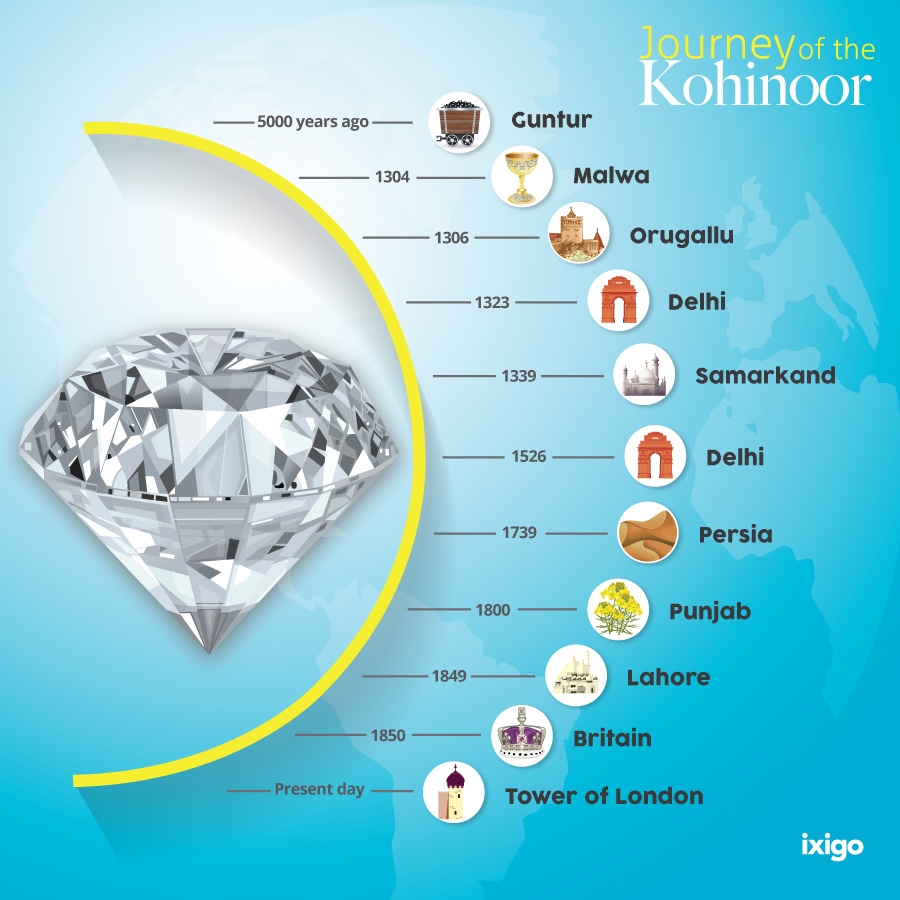The Kohinoor diamond, renowned for its unparalleled beauty and storied history, is one of the world’s most iconic gems. With a legacy that spans centuries and continents, the Kohinoor has captured the imagination of kings, conquerors, and connoisseurs alike. Join us on a journey through time and space as we unravel the captivating saga of the Kohinoor diamond, from its mythical origins to its modern-day allure.
Mythical Origins:
The origins of the Kohinoor diamond are shrouded in myth and legend, adding to its mystique and allure. According to ancient Hindu mythology, the Kohinoor was first discovered as a rough stone in the mines of Golconda, India, where it was believed to be the eye of a Hindu goddess. The diamond was said to possess mystical powers and bring prosperity and good fortune to its owner.
Imperial Treasures:
The Kohinoor’s journey through history began in the 14th century when it came into the possession of the Kakatiya dynasty of South India. From there, it passed through the hands of various rulers, including the Sultan of Delhi and the Mughal emperors, who prized it as a symbol of wealth and power.
In the early 18th century, the Kohinoor found its way into the treasury of the Persian ruler Nadir Shah, who invaded India and plundered its riches. The diamond then passed into the possession of the Afghan king Ahmad Shah Durrani, who coveted it as a symbol of his conquests.
British Acquisition:
The turning point in the Kohinoor’s history came in 1849 when the British East India Company annexed the Punjab region of India following the Second Anglo-Sikh War. As part of the Treaty of Lahore, the Kohinoor diamond was surrendered to the British as spoils of war and presented to Queen Victoria as a symbol of British supremacy in India.
The Kohinoor was subsequently cut and polished to enhance its brilliance and clarity, reducing its size from over 186 carats to its current weight of 105.6 carats. It was then set in a new crown made for Queen Victoria, where it became a cherished symbol of the British monarchy’s global influence and imperial grandeur.
Controversies and Legends:
The acquisition of the Kohinoor diamond by the British has been steeped in controversy and debate, with calls for its repatriation to India growing louder in recent years. India has repeatedly sought the return of the Kohinoor, arguing that it was taken unlawfully and should be returned to its rightful owners.
In addition to its tumultuous history, the Kohinoor diamond has been surrounded by tales of curses and misfortune, leading some to believe that it brings bad luck to its owners. However, skeptics dismiss these superstitions as mere folklore, attributing the diamond’s allure to its unparalleled beauty and historical significance.
Modern-Day Legacy:
Today, the Kohinoor diamond resides in the Tower of London, where it is displayed as part of the British Crown Jewels. Despite its controversial past and ongoing disputes over ownership, the Kohinoor remains a symbol of India’s rich cultural heritage and enduring legacy.
Its flawless brilliance and timeless beauty continue to captivate admirers around the world, ensuring that the legend of the Kohinoor diamond will endure for generations to come. Whether viewed as a priceless treasure or a symbol of colonial exploitation, the Kohinoor remains a testament to the power of diamonds to transcend time and space, weaving a tapestry of myth and majesty that continues to fascinate and inspire.






